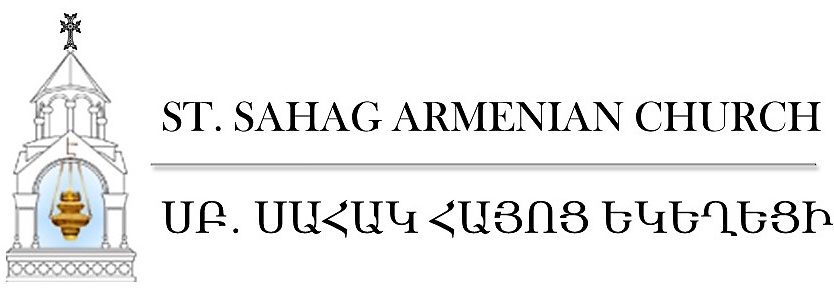Suddenly, Jesus came and stood among them and said, “Peace be with you!” (John 20:19)
Throughout history, Armenian Christians have considered the home to be a sacred place: the tranquil sanctuary of the family, where habits of virtue, pious traditions, and life-affirming customs are passed from one generation to another. Under one roof, members of a household achieve a unity of spirit and assume responsibility for the larger life of the community. They break bread and share life’s joys and sorrows.
Above all, the home is where one’s faith in God is first kindled, and where that faith finds some of the most profound occasions for action. God’s presence makes every family home a “Little Church” (in Greek, ecclesia), where His love and blessings permeate every corner.
Through a special ceremony of the Armenian Church, we ask God to bless our homes on occasions like the Nativity and Resurrection of Christ, as well as on the joyous occasion of moving into a new home. It’s called the Dounohrnek, or Home Blessing service.
Home Blessing: An Armenian Custom
During a Home Blessing, the priest takes with him wafer and incense. He blesses bread, water, and salt: three fundamental elements essential for human life. The priest asks God not to lessen these three gifts, without which life becomes impossible or imperfect.
The bread, water, and salt are symbols of God’s infinite goodness and care. Bread, which symbolically represents the Word of God, grants life to all those who taste it.
Salt seasons our food, making it delicious and edible. Metaphorically, salt represents man in this world with his words and deeds; Christ said, “You are the salt of the earth.” Man’s life should be seasoned with wisdom, moderation, or a sense of sufficiency.
Finally, Water, the essential element of life, represents cleanliness. Through the water of baptism we are cleansed, renewed in Christ, and united with our God.
Alongside the bread, salt, and water offered on a tray by the home-dwellers, the priest places the wafer stamped with a crucifix and designs of grapes and wheat. The wafer signifies the presence of Christ in the home. The members of the family can either distribute the wafer among themselves or keep it in a jar along with flour, salt, or rice.
During a Home Blessing, it is customary to burn incense, symbolizing the burning of our souls with our Lord’s love. In his prayer the Psalmist said: “Let my prayer be counted as incense before Thee.”
In the prayer of the Home Blessing the priest first asks for purity and abundance of the three gifts. Then he blesses the home and all its inhabitants, asks God to keep them away from visible and invisible enemies, and prays that God will protect them and grant them health of soul and body.
Reviving a Meaningful Practice
The Home Blessing is a meaningful religious service that can bring the entire family together in holiness. Through this ceremony faith is replenished and strengthened, and the presence of our Lord is felt.
The beautiful tradition of the Home Blessing was once an annual routine for every Armenian Christian family. In modern times it had fallen into disuse, but has regained momentum in recent years, as more than ever before, families feel a need to acknowledge the presence Christ in their homes and lives.
Prepare for the service by placing a glass of water, a small dish of salt, and a slice of bread on a tray. The priest will bring incense, charcoal, and incense burner and whatever else he needs with him.
The revival of this centuries-old custom brings the Lord closer to us. Having all members of the family taking part of the ceremony, young and old alike, will make it all the more meaningful.
